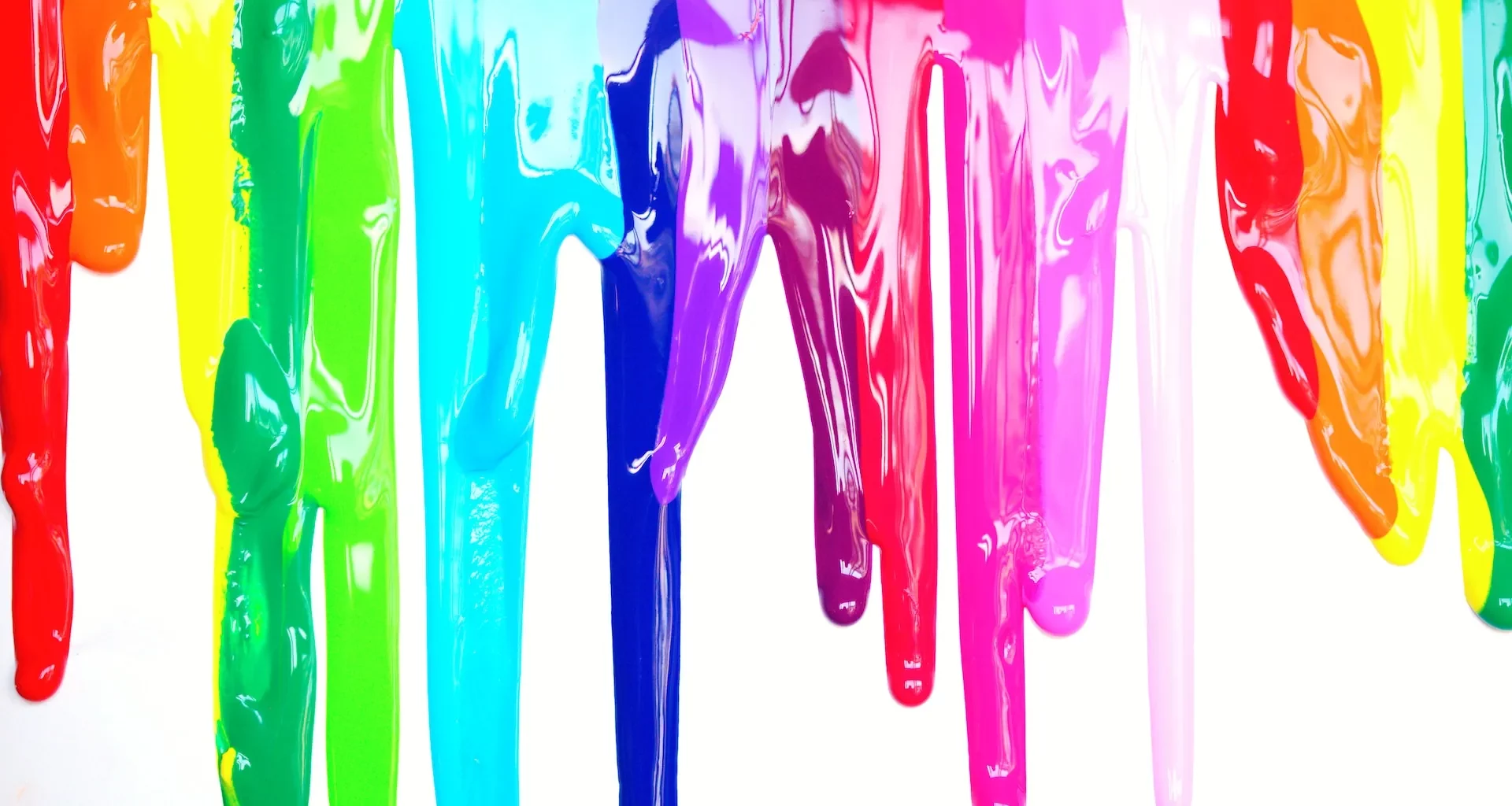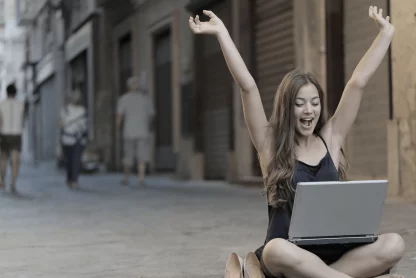In a world where demands are constantly evolving and expectations are higher than ever, the quest for creativity and productivity has become a dynamic pursuit. The ability to seamlessly transition between these two seemingly contrasting states is a skill sought after by professionals, artists, and individuals alike. Welcome to “Find Your Flow: The Ultimate Guide to Boosting Creativity and Productivity,” a comprehensive exploration into the art of harmonizing these essential aspects of life. Within these pages, we embark on a journey to uncover the secrets of achieving a state of flow—a mental state where time seems to dissipate, focus intensifies, and ideas flourish effortlessly. Whether you’re an entrepreneur striving for innovative breakthroughs, a student looking to excel in academics, or simply someone eager to enhance your daily life, this guide will provide you with invaluable insights, practical strategies, and actionable steps to ignite your creativity while maintaining peak productivity. Let’s dive into the world of flow, where creativity and productivity converge to unlock your fullest potential.
Table of Contents
- Unleashing Creative Potential: Understanding the Power of Flow
- Exploring the Flow State: What It Is and How It Works
- Tapping into Inspiration: Cultivating the Creative Mindset
- Creating an Optimal Environment: Setting the Stage for Productivity
- Mindfulness and Flow: How Present-Moment Awareness Fuels Creativity
- The Role of Passion: Fueling Creativity and Fostering Productivity
- Breaking Through Blocks: Overcoming Creative Challenges
- Balancing Creativity and Structure: Finding Your Workflow Rhythm
- Harnessing Flow in the Workplace: Boosting Team Creativity
- Sustaining the Creative Flame: Nurturing Long-Term Productivity
- Frequently Asked Questions

Unleashing Creative Potential: Understanding the Power of Flow
In the quest to enhance creativity and productivity, one concept stands out as a beacon of promise: flow. Often referred to as being “in the zone,” flow represents a state of optimal engagement where individuals experience heightened focus, a sense of timelessness, and a surge of creativity. Understanding the dynamics of flow is essential for anyone striving to unlock their creative potential while maximizing productivity.
Defining Flow: The Zone of Optimal Experience
Flow, as conceptualized by psychologist Mihaly Csikszentmihalyi, is a state where individuals are fully absorbed in an activity, experiencing a sense of joy, immersion, and effortless concentration. During this state, the challenges of the task at hand align perfectly with an individual’s skill level, resulting in a feeling of being in complete control. Flow is characterized by an absence of self-consciousness and a deep sense of fulfillment, making it a fertile ground for creativity to flourish.
The Creative Connection: Flow and Innovation
Research indicates a strong correlation between flow and creativity. A study explored the impact of flow on creativity and found that individuals were more likely to generate creative ideas and solutions while in a flow state. The heightened focus and reduced distractions of flow enable the mind to explore novel connections, leading to innovative insights.
Boosting Productivity: Flow’s Influence on Performance
Flow not only elevates creativity but also enhances productivity. A study discovered that individuals in a state of flow were not only more creative but also more productive compared to those not experiencing flow. The heightened concentration and motivation associated with flow contribute to improved task performance, making it an invaluable asset for professionals seeking to achieve more in less time.
Cultivating Flow: Nurturing Conditions for Creativity and Productivity
Cultivating flow requires creating an environment that fosters engagement and minimizes distractions. Eliminating external disruptions, setting clear goals, and engaging in tasks that align with one’s passions can enhance the likelihood of experiencing flow. Additionally, integrating mindfulness practices and techniques that promote deep focus can facilitate the journey into the flow state.
In the pursuit of unlocking creative potential and boosting productivity, understanding the principles of flow can serve as a guiding light. By harnessing the power of flow, individuals can transcend limitations, tap into their innate creativity, and navigate the dynamic interplay between creativity and productivity in their personal and professional lives.
Exploring the Flow State: What It Is and How It Works
Flow State: An Introduction
The flow state, often referred to as being “in the zone,” is a remarkable mental state characterized by a profound sense of immersion, focus, and peak performance. It’s that magical state where time seems to fly by, distractions fade away, and your actions seem to flow effortlessly. But what exactly is the flow state, and how does it work its transformative magic on creativity and productivity?
Understanding the Flow State
Coined by psychologist Mihaly Csikszentmihalyi, the flow state is a condition where an individual is fully absorbed in an activity, feeling both challenged and skilled enough to meet the challenge. During this state, external concerns and worries diminish as attention narrows to the task at hand. Flow is not only experienced by artists, athletes, and musicians; it’s a universal phenomenon that can be harnessed in any endeavor.
The Inner Workings of Flow
Flow occurs when the level of challenge in an activity matches an individual’s skill level. When the challenge is too low, boredom ensues; when it’s too high, anxiety takes over. Flow emerges in that sweet spot where skills meet challenges, resulting in a harmonious engagement. Neurologically, during flow, the brain enters a state of hyperfocus, activating areas responsible for concentration, creativity, and learning while quieting the inner critic.
The Flow State and Creativity
Flow and creativity are intertwined. In a study, artists reported experiencing flow during their most creative moments. The heightened focus and reduced self-awareness of flow allow the mind to explore new connections, leading to innovative insights. This state is marked by the absence of judgment, which liberates creative thinking.
The Productivity Powerhouse
Flow isn’t just about creativity—it’s a powerhouse for productivity too. A study found that individuals in a flow state are not only more creative but also more productive compared to those not in flow. The heightened focus and intrinsic motivation fuel task performance and lead to a sense of accomplishment.
Harnessing the Flow State
Cultivating the flow state requires recognizing and intentionally entering this state. Setting clear goals, minimizing distractions, and fully immersing oneself in the task can trigger the flow state. Practices like mindfulness, meditation, and creative visualization can also facilitate entering the flow. The more you practice harnessing flow, the more you can tap into this state’s incredible potential.
In this journey to unlock creativity and productivity, understanding the dynamics of the flow state is like having a master key. By delving into the flow state’s mechanisms, individuals can harness its transformative power to elevate their endeavors and experience the magic of being fully engaged.
Tapping into Inspiration: Cultivating the Creative Mindset
Unveiling the Creative Mindset
Creativity isn’t a rare gift reserved for a select few; it’s a mindset that can be nurtured and cultivated. Whether you’re an artist, entrepreneur, or simply seeking innovative solutions, tapping into your creative potential requires adopting a certain mindset—one that embraces curiosity, embraces failure, and fuels imagination.
Embrace Curiosity and Wonder
Cultivating a creative mindset starts with curiosity. Curiosity opens doors to new ideas, perspectives, and possibilities. A study found that embracing curiosity enhances creativity by encouraging individuals to explore uncharted territory. Keep asking questions, seeking out new experiences, and engaging with diverse subjects to fuel your creative fire.
Embrace Failure as a Stepping Stone
Fear of failure can stifle creativity. However, a study showed that reframing failure as a stepping stone to success can boost creative performance. Embrace failures as opportunities to learn, adapt, and refine your ideas. This mindset shift frees you from perfectionism and encourages experimentation.
Fuel Imagination Through Mindfulness
Mindfulness can ignite the creative spark. Research suggests that mindfulness practices enhance divergent thinking—the ability to generate a wide range of ideas. Mindfulness trains your mind to focus on the present moment, quieting the noise that inhibits creative thinking.
Encourage Idea Generation
The creative mindset thrives on generating ideas without immediate judgment. Allow yourself to brainstorm without limitations. Even seemingly wild ideas can lead to breakthroughs. A study revealed that individuals who engaged in “wild thinking” generated more creative ideas.
Seek Inspiration from Different Sources
Expose yourself to a variety of stimuli. Whether it’s art, nature, literature, or even conversations with diverse individuals, drawing inspiration from various sources sparks fresh ideas. A study showed that exposure to diverse influences enhances creativity by offering different perspectives.
Harnessing the Creative Mindset
Cultivating a creative mindset is an ongoing journey. Practice embracing curiosity, reframing failure, and engaging in mindfulness to fuel your imagination. By encouraging idea generation and seeking inspiration from diverse sources, you create the ideal environment for your creative mindset to flourish.
Remember, creativity is a muscle that grows stronger with use. As you cultivate the creative mindset, you’ll find yourself tapping into a wellspring of inspiration, boosting both your creativity and productivity to new heights.
Creating an Optimal Environment: Setting the Stage for Productivity
The Power of Your Surroundings
The environment in which you work can significantly impact your creativity and productivity. Creating an optimal workspace tailored to your needs can enhance your ability to find your flow—a state of deep focus and productivity. Studies show that an organized and inspiring environment can positively influence cognitive processes and overall well-being.
Designing a Distraction-Free Zone
Clutter and distractions can derail your creative process. Research by Nicholas J. A study suggests that a clutter-free environment is linked to improved concentration and mental clarity. Minimize visual and auditory distractions to create a space where your mind can fully engage with the task at hand.
Harnessing Natural Light and Greenery
Natural light and greenery have a profound impact on mood and cognitive function. A study found that exposure to natural elements in the workplace led to increased well-being and overall job satisfaction. Incorporate natural elements, such as plants and ample sunlight, to foster a conducive environment for creativity and productivity.
Personalize Your Space
A personalized workspace can boost motivation and creativity. A study revealed that employees who had control over their workspace design experienced higher levels of well-being and productivity. Incorporate elements that reflect your personality and interests to create a space that resonates with you.
Promote Ergonomics
Physical comfort is essential for maintaining focus and energy levels. Research shows that ergonomic work environments can significantly enhance productivity and reduce physical discomfort. Invest in comfortable furniture and set up your workspace to minimize strain on your body.
Declutter for Mental Clarity
Research highlights the psychological benefits of an organized environment. A clutter-free workspace can lead to better cognitive functioning, reduced stress, and improved decision-making. Regularly declutter your space to create a clear and inviting atmosphere.
Crafting Your Creative Haven
Your workspace should be a haven that nurtures creativity and boosts productivity. By designing a distraction-free zone, incorporating natural elements, personalizing your space, promoting ergonomic practices, and maintaining a clutter-free environment, you set the stage for optimal creativity and productivity. Remember, your environment is a reflection of your mindset—craft it to support your journey toward finding your flow.
Mindfulness and Flow: How Present-Moment Awareness Fuels Creativity
Embracing the Present Moment
In the quest to boost creativity and productivity, one invaluable tool is mindfulness—a practice rooted in present-moment awareness. Mindfulness involves being fully engaged in the here and now, allowing your thoughts and sensations to unfold without judgment. Research suggests that integrating mindfulness into your routine can enhance your ability to tap into the state of flow—a mental state where you’re fully immersed and energized by the task at hand.
The Connection between Mindfulness and Flow
Studies have shown a significant connection between mindfulness and flow. When you cultivate mindfulness, you’re better equipped to enter a flow state, as mindfulness primes your mind for focused concentration and heightened awareness. This synergy enables you to embrace challenges with a clear mind and a calm disposition, enhancing your creative problem-solving skills.
Enhancing Cognitive Flexibility
Mindfulness bolsters cognitive flexibility, a key component of creativity. Research indicates that mindfulness encourages divergent thinking—the ability to generate a variety of ideas and solutions. By being present in the moment, you break free from rigid thought patterns, enabling your mind to explore novel perspectives and innovative approaches.
Cultivating the Mindful Flow
To integrate mindfulness into your creative journey, allocate time for mindfulness practices such as meditation, deep breathing, or mindful walks. These practices help train your mind to focus on the present, fostering an environment conducive to experiencing the flow state. As you engage in creative endeavors, infuse your activities with mindfulness—pay attention to sensations, thoughts, and emotions as they arise, and maintain a curious and nonjudgmental stance.
Unlocking Your Creative Potential
Mindfulness serves as a gateway to the flow state, amplifying your creative potential. By embracing present-moment awareness, you cultivate a receptive mindset that nurtures creativity, heightens focus, and promotes a sense of clarity. The synergy between mindfulness and flow empowers you to harness your creative prowess and unlock the untapped depths of your innovative capabilities.
The Role of Passion: Fueling Creativity and Fostering Productivity
Igniting the Flame: The Power of Passion
Passion is more than just a fleeting emotion—it’s a driving force that fuels creativity and ignites productivity. When you’re passionate about a task or a project, you’re more likely to immerse yourself fully in it, leading to a state of flow—a heightened sense of engagement and focus. Passion acts as a catalyst, propelling you towards innovative ideas and enhancing your overall performance.
The Connection Between Passion and Flow
Numerous studies highlight the strong connection between passion and the flow state. Researchers have found that individuals who are passionate about their work are more likely to experience flow, as their enthusiasm and intrinsic motivation propel them into a state of intense focus. This alignment of passion and flow can lead to exceptional creativity and heightened productivity.
Enhancing Cognitive Function
Passion has a profound impact on cognitive function. Studies suggest that individuals driven by passion demonstrate enhanced cognitive skills such as problem-solving, critical thinking, and the ability to overcome challenges. When you’re passionate about a task, your brain is primed to think more flexibly and creatively, leading to innovative solutions.
Cultivating Passion for Creativity and Productivity
To harness the power of passion, start by identifying activities or projects that genuinely resonate with you. When you’re passionate about what you’re doing, you’re more likely to enter a flow state effortlessly. Nurture your passion by setting goals that align with your interests, seeking out opportunities for skill development, and engaging in activities that bring you joy and fulfillment.
Unlocking the Creative Potential
Passion acts as a catalyst, propelling you into the flow state where creativity and productivity thrive. When you’re passionate about your endeavors, you’re more likely to experience a seamless fusion of focus, enthusiasm, and innovative thinking. By recognizing the role of passion in your creative journey, you unlock a powerful tool that drives you to new heights of creativity and productivity.
“Flow” represents a state of optimal engagement where individuals experience heightened focus, a sense of timelessness, and a surge of creativity. Understanding the dynamics of flow is essential for anyone striving to unlock their creative potential while maximizing productivity.
Breaking Through Blocks: Overcoming Creative Challenges
Understanding Creative Blocks
Creative blocks are a common hurdle that many individuals face in their pursuit of productivity and creativity. These mental barriers can range from self-doubt and lack of inspiration to fear of failure. Overcoming these challenges is essential to unlock your creative potential and maintain a consistent level of productivity.
Embracing the Growth Mindset
Adopting a growth mindset can be a powerful strategy for breaking through creative blocks. Research suggests that individuals with a growth mindset see challenges as opportunities for learning and growth. When faced with a creative roadblock, approach it with curiosity and the belief that you can learn from the experience, ultimately leading to innovative solutions.
Harnessing Diverse Perspectives
Collaboration and seeking feedback from others can provide fresh perspectives that help you overcome creative blocks. Studies highlight the benefits of diverse group brainstorming, showing that the exchange of ideas can lead to novel solutions that you might not have considered on your own. Engaging with a diverse range of viewpoints can spark new inspiration and break down mental barriers.
Practicing Mindfulness to Unblock Creativity
Mindfulness techniques can also be effective in overcoming creative blocks. Mindfulness helps you become aware of your thoughts and emotions without judgment, allowing you to observe and release any negative self-talk or mental obstacles. By practicing mindfulness regularly, you can create a mental space that is conducive to creativity and productivity.
Persistence and Adaptability
Breaking through creative blocks requires persistence and adaptability. Don’t be discouraged by initial setbacks; instead, view them as stepping stones to progress. Experiment with different approaches, techniques, and environments to discover what works best for you. Remember that creative challenges are a natural part of the journey, and with dedication, you can overcome them and continue on your path of creativity and productivity.
Balancing Creativity and Structure: Finding Your Workflow Rhythm
Embracing the Dual Nature
Creativity and structure may seem like opposing forces, but when balanced effectively, they can become powerful allies in boosting both creativity and productivity. Research highlights the importance of finding a balance between the freedom to explore new ideas and the structure that guides and refines those ideas. This dynamic interplay can lead to optimal creative outcomes.
Creating a Flexible Routine
Establishing a flexible routine can provide the structure needed to support your creative endeavors while allowing room for spontaneous inspiration. Studies emphasize that a routine offers predictability and consistency, reducing decision fatigue and freeing up mental energy for creative thinking. Design a daily schedule that allocates specific time blocks for focused work, brainstorming, and relaxation.
Utilizing Creative Rituals
Creative rituals can help signal your brain that it’s time to transition into a creative mode. These rituals could include setting up your workspace, engaging in a brief mindfulness exercise, or listening to specific music. Research suggests that rituals can enhance the perception of meaning and contribute to a sense of control, both of which are conducive to creative thinking.
The Power of Constraints
While it might seem counterintuitive, constraints can enhance creativity by focusing your attention and forcing you to think outside the box. Studies reveal that constraints can encourage innovative problem-solving by pushing you to find new solutions within limitations. Embrace constraints as creative challenges that can spark innovative ideas.
Reflect and Adapt
Regularly reflect on your creative process and adjust your balance of creativity and structure as needed. Remember that this balance is personal and may evolve over time. Pay attention to when you feel most creative and productive, and adjust your workflow rhythm accordingly. By continuously evaluating and fine-tuning your approach, you can optimize your creative output and overall well-being.
Harnessing Flow in the Workplace: Boosting Team Creativity
Fostering Collective Flow
In the dynamic landscape of modern workplaces, harnessing the power of flow can have a transformative impact on team creativity and productivity. Researchers have found that when teams experience collective flow – a state of deep engagement, focus, and synergy – they generate innovative ideas and achieve higher levels of performance. Csikszentmihalyi’s groundbreaking work (1990) on flow emphasizes that fostering an environment conducive to this state can lead to enhanced collaboration and creative problem-solving.
Cultivating Collaborative Conditions
Creating an environment that nurtures collective flow involves several key factors. Clear goals and feedback mechanisms are crucial, as they provide a sense of direction and enable team members to adjust their efforts in real-time. Studies emphasize that open communication and mutual respect are fundamental to establishing trust and promoting creative exchange within the team.
Balancing Challenge and Skill
One of the cornerstones of flow is finding the balance between the challenge level of the task and the skill level of the team. Research by Amabile and Kramer (2011) underscores that tasks that are too easy can lead to boredom, while tasks that are too difficult can cause anxiety. Leaders should assess the team’s capabilities and align project complexity accordingly to ensure a harmonious and productive flow state.
Encouraging Diverse Perspectives
Incorporating diverse viewpoints can enhance the team’s creativity and contribute to a richer flow experience. Studies suggest that diverse teams engage in more thorough information processing and generate a wider range of solutions. Embrace differences in background, expertise, and perspective as assets that can fuel collective flow and innovative outcomes.
Enabling Time for Deep Work
To tap into the flow state, teams need uninterrupted time for deep, focused work. Create a work environment that respects periods of undistracted concentration. Allocate specific time blocks for focused tasks, limit unnecessary meetings, and establish communication norms that prioritize deep work. This approach aligns with findings on the importance of deep work for generating valuable insights and creative breakthroughs.
By integrating the principles of flow into team dynamics, organizations can elevate their collective creativity, productivity, and overall success.
Sustaining the Creative Flame: Nurturing Long-Term Productivity
Embracing Consistent Creativity
Nurturing creativity and productivity isn’t just about short bursts of inspiration; it’s about cultivating sustainable practices that keep the creative flame burning over the long term. Research suggests that consistently engaging in creative activities and maintaining a sense of purpose can significantly impact creative output.
Prioritizing Routine and Ritual
Incorporating creativity into daily routines can enhance productivity by creating a rhythm that encourages innovation. Studies show that rituals and habits provide a sense of structure, making it easier to transition into a focused and creative mindset. Consider setting aside dedicated time each day for brainstorming, ideation, or exploring new ideas.
Embracing Reflection and Refinement
Sustained creativity is fueled by a willingness to reflect on past work and refine ideas. Research suggests that artists and creators who engage in critical self-reflection and iteration tend to produce higher-quality work. Regularly review your projects, assess what’s working and what’s not, and be open to making necessary adjustments.
Balancing Rest and Engagement
Maintaining high levels of creativity requires a balanced approach that includes both active engagement and periods of rest. Studies emphasize that incorporating breaks and moments of relaxation can prevent burnout and enhance overall productivity. Engage in activities that rejuvenate your mind, such as mindfulness exercises, walks, or hobbies.
Fueling Curiosity and Exploration
Staying curious and open to new experiences is essential for sustaining creativity. Research highlights that curiosity drives exploration and innovative thinking. Regularly seek out new challenges, learn from diverse sources, and push yourself outside of your comfort zone to stimulate fresh ideas.
Fostering a Supportive Environment
A supportive environment plays a crucial role in sustaining creativity. Surround yourself with individuals who encourage your creative pursuits and provide constructive feedback. Collaborative spaces and communities can offer inspiration and a sense of accountability.
By adopting these strategies, you can foster a creative and productive lifestyle that stands the test of time.
Frequently Asked Questions
Embracing failure and setbacks is a powerful strategy for enhancing creativity and productivity. Viewing failures as opportunities for learning and growth fosters resilience and a willingness to experiment. Creative breakthroughs often emerge from iterations and adjustments. By overcoming setbacks, you develop problem-solving skills, which are integral to both creativity and productivity. This mindset also reduces fear of failure, allowing you to take creative risks and explore unconventional solutions.
The physical environment significantly impacts creativity and productivity. A clutter-free workspace reduces distractions and mental load, enhancing focus. Incorporating natural light and ergonomic furniture creates a comfortable and energizing atmosphere. Personalized touches like artwork or plants stimulate creativity by making the environment more engaging. Quiet spaces or noise-cancelling headphones can boost concentration, while collaborative areas encourage idea-sharing. Tailoring your environment to your preferences and needs creates a space that optimally supports both creative thinking and efficient work.
Managing distractions is vital for maintaining focus on creative tasks. Turn off notifications on devices to minimize interruptions. Designate specific blocks of time for focused work and inform colleagues of your availability. Use productivity techniques like the Pomodoro Technique, which involves working for a set time followed by a short break. Create a physical workspace that minimizes distractions and signals a “work mode.” Regularly evaluate your priorities to ensure you’re dedicating time to your most important creative tasks.
Incorporating breaks into your work routine is a strategy that boosts both creativity and productivity. Breaks prevent burnout by allowing your brain to rest and recharge. During breaks, engage in activities that relax and inspire you, like taking a walk, listening to music, or doing a quick mindfulness exercise. These moments of relaxation rejuvenate your mind, making it more receptive to creative insights. Structured breaks also prevent the diminishing returns of continuous work, ensuring sustained productivity throughout the day.









